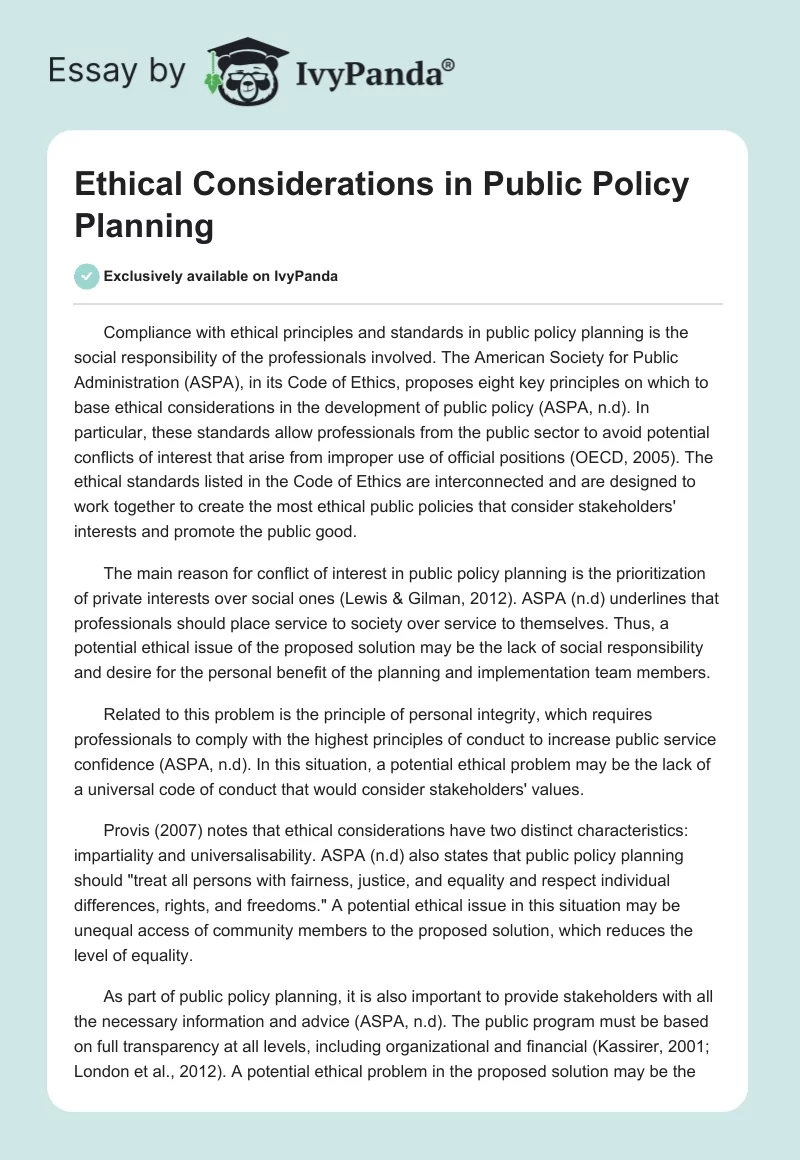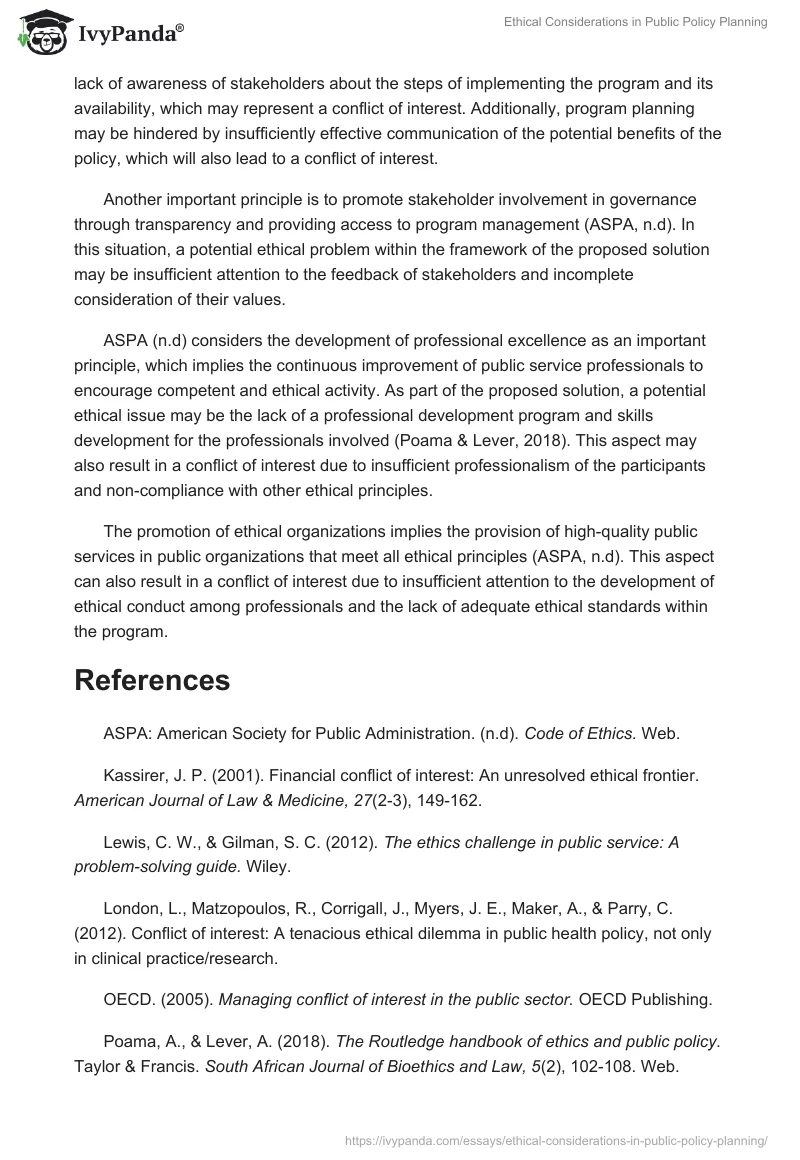Compliance with ethical principles and standards in public policy planning is the social responsibility of the professionals involved. The American Society for Public Administration (ASPA), in its Code of Ethics, proposes eight key principles on which to base ethical considerations in the development of public policy (ASPA, n.d). In particular, these standards allow professionals from the public sector to avoid potential conflicts of interest that arise from improper use of official positions (OECD, 2005). The ethical standards listed in the Code of Ethics are interconnected and are designed to work together to create the most ethical public policies that consider stakeholders’ interests and promote the public good.
The main reason for conflict of interest in public policy planning is the prioritization of private interests over social ones (Lewis & Gilman, 2012). ASPA (n.d) underlines that professionals should place service to society over service to themselves. Thus, a potential ethical issue of the proposed solution may be the lack of social responsibility and desire for the personal benefit of the planning and implementation team members.
Related to this problem is the principle of personal integrity, which requires professionals to comply with the highest principles of conduct to increase public service confidence (ASPA, n.d). In this situation, a potential ethical problem may be the lack of a universal code of conduct that would consider stakeholders’ values.
Provis (2007) notes that ethical considerations have two distinct characteristics: impartiality and universalisability. ASPA (n.d) also states that public policy planning should “treat all persons with fairness, justice, and equality and respect individual differences, rights, and freedoms.” A potential ethical issue in this situation may be unequal access of community members to the proposed solution, which reduces the level of equality.
As part of public policy planning, it is also important to provide stakeholders with all the necessary information and advice (ASPA, n.d). The public program must be based on full transparency at all levels, including organizational and financial (Kassirer, 2001; London et al., 2012). A potential ethical problem in the proposed solution may be the lack of awareness of stakeholders about the steps of implementing the program and its availability, which may represent a conflict of interest. Additionally, program planning may be hindered by insufficiently effective communication of the potential benefits of the policy, which will also lead to a conflict of interest.
Another important principle is to promote stakeholder involvement in governance through transparency and providing access to program management (ASPA, n.d). In this situation, a potential ethical problem within the framework of the proposed solution may be insufficient attention to the feedback of stakeholders and incomplete consideration of their values.
ASPA (n.d) considers the development of professional excellence as an important principle, which implies the continuous improvement of public service professionals to encourage competent and ethical activity. As part of the proposed solution, a potential ethical issue may be the lack of a professional development program and skills development for the professionals involved (Poama & Lever, 2018). This aspect may also result in a conflict of interest due to insufficient professionalism of the participants and non-compliance with other ethical principles.
The promotion of ethical organizations implies the provision of high-quality public services in public organizations that meet all ethical principles (ASPA, n.d). This aspect can also result in a conflict of interest due to insufficient attention to the development of ethical conduct among professionals and the lack of adequate ethical standards within the program.
References
ASPA: American Society for Public Administration. (n.d). Code of Ethics. Web.
Kassirer, J. P. (2001). Financial conflict of interest: An unresolved ethical frontier. American Journal of Law & Medicine, 27(2-3), 149-162.
Lewis, C. W., & Gilman, S. C. (2012). The ethics challenge in public service: A problem-solving guide. Wiley.
London, L., Matzopoulos, R., Corrigall, J., Myers, J. E., Maker, A., & Parry, C. (2012). Conflict of interest: A tenacious ethical dilemma in public health policy, not only in clinical practice/research.
OECD. (2005). Managing conflict of interest in the public sector. OECD Publishing.
Poama, A., & Lever, A. (2018). The Routledge handbook of ethics and public policy. Taylor & Francis. South African Journal of Bioethics and Law, 5(2), 102-108. Web.
Provis, C. (2007). Ethics and issues in public policy.Policy and Society, 26(3), 21-33.


